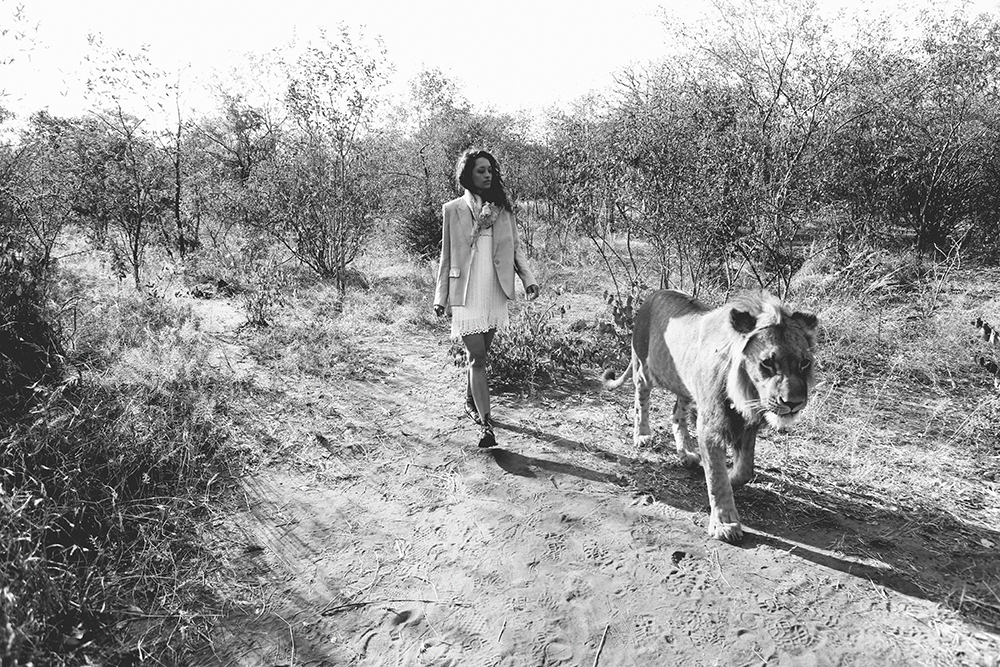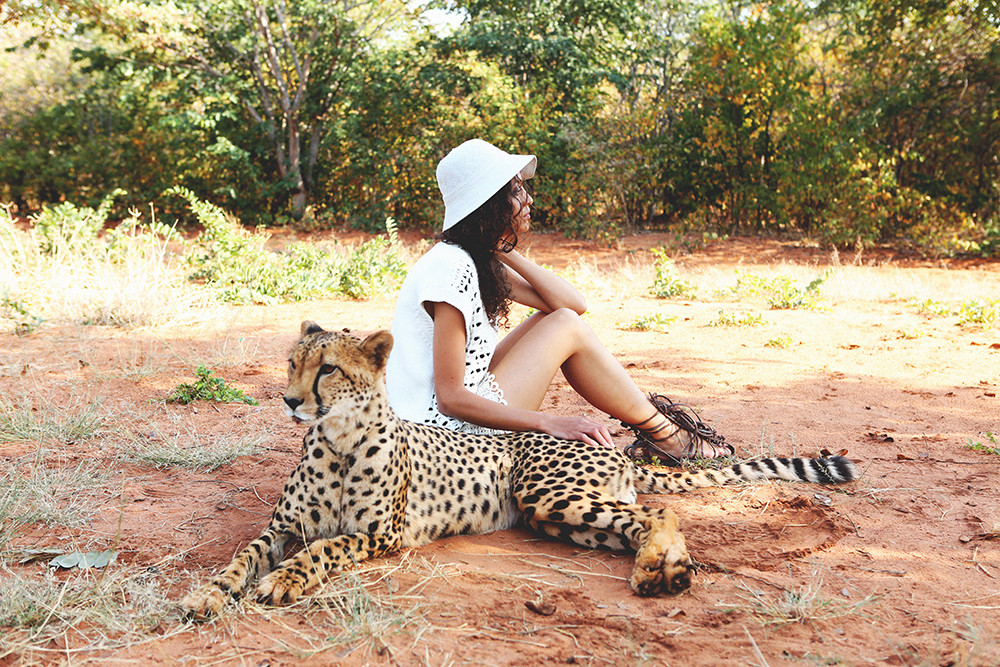Maybe it’s odd timing to post these begone Zambia pictures. There was very little to report anymore after my numerous and elaborate stories last summer. But it seems I have left out a few details. Like the true and tragic tale of Jack Goddard, a dapper Englishman who married a Zambian Bemba princess and got eaten by a lion. According to testament “he was on a hunting expedition to catch a man eater and ended up becoming its dinner.” Boo. In the 1920s this was not uncommon practice. Lions roamed freely among the people. They fought each other fiercely for land and red meat and made one particular man’s job especially perilous. More often than not, the mail in Zambia was late because the poor old postman was chased up a tree by lions.
Fast-forward nearly a century: big cats, and many other mighty African bush animals are no longer allowed on human land. They live in National Parks, protected against poachers and their own ferocious appetite for bipedal flesh. The African lion is classified as “vulnerable” by the International Union for Conservation of Nature. Their numbers went down from 200,000 to just 32,000. It’s a dire, frustrating situation for locals and foreigners alike. And so it is perhaps ironic that Jack’s great-grand-daughter, Gloria Huwiler, a beautiful, young actress residing in London, is advocating for those same animals that killed her ancestor, and feels “he got what he deserved, quite frankly…”
Gloria is an active member of the Tau Foundation – Tau means lion – a group of Zambians who not only strive to empower women by teaching them how to manufacture local products, like the sandals in these photos, and organize work shops for future fashion entrepreneurs, like I did, but also support all kinds of small and large parks that rehabilitate big cats, like the Mukuni Big 5, where these photos were taken. Gloria and I visited the park right after the cats had eaten their breakfast and went for a scenic walk. Unlike Jack’s gruesome fate though, we both survived their sweet paws. “I could happily have taken one of the cheetahs home with me,” she said. “They were so affectionate and lovable.”
Gloria grew up on these lands, and in the center of attention. Her fondest childhood memory is “being a flower in our first ballet concert at the Lusaka Playhouse”. Much to the disdain of the male, business-minded members of her family, it was the beginning of an irreparable passion for acting. “I’m the only one who has dedicated my time fully to pursuing a career in the arts. The guys in the fam can be a bit of an obstacle if you’re looking for validation as an artist,” she complains, “but then again without obstacles how do you reaffirm your commitment to your passion and dreams and build the strength to pursue them? So it’s character building, I guess, and I thank them! My dad was very disappointed when he came to my university graduation and found me still on stage, doing my final one-woman showcase. There was a moment when I took a class on law, he really hoped it would stick. Alas.”
Her manager says she’s “down to earth” but she personally contributes her success to “enthusiasm, I guess? Is that an asset?” In her most recent movie And the Circus Leaves Town, she solemnly proves that point. “The indie I did in Turkey had no medic I can remember,” she thinks “and I danced in a circle of fire, literally, balanced on someone’s shoulders, pranced around in wings and five-inch stilettos with a mouth full of paraffin and eventually lay down in a pile of manure. I loved it.” So yeah, enthusiasm…
When we said goodbye to the cats, I gifted Gloria the white eye-let Phillip Lim dress she’s wearing with the cheetahs, because she loves fashion too. “Fashion is the fun side of things,” she admits. “My casting outfits vary greatly depending on the audition I’m going out for: from ethnically ambiguous vixen – I get that a lot in breakdowns – the ethnically ambiguous thing – to skater girl, to cop, to high-powered lawyer chick, to crack addict… and I love playing dress up. Outside of acting-work related activities I’m a slob and live in my sweats, my converse and a beany to hide my unruly curls, at home writing and languishing in existential angst.”
Anyways, Tau is working hard on a new shoe collection, and setting up a PayPal account to receive donations. You will hear from us!
































Incredibly irresponsible use of “wildlife”. These animals are NOT rewilded, and if they are, do not possess the skills to survive in the wild. I think your model, photographer, and whoever thought of this concept should be eaten as well.
Dear Jennifer,
Thank you for your concern and comment. We appreciate your concern for African Wildlife, and share your views that wild animals should remain in the wild. Mukuni Big 5 where the images were shot is a conservation effort which takes big cats that have been grievously injured or orphaned and would not be able to survive alone in the wild. This effort gives cats in this position an alternative given their compromised position and already dwindling numbers. They socialize with other cats of the same species and in their fifth year, once fully grown are introduced into a large private game reserve. Mukuni big 5 works to establish the self sufficiency of animals by training them to hunt and feed themselves, so they are able to socialize and function within the game reserve once released. They socialize with members from their existing family group, however and are not in competition with animals who have existed in National Parks their entire lives. The effort has a breeding program to increase the numbers and bio diversity of an already vulnerable group, no animals that are in already sufficient in National Parks are ever taken in.
To keep the project alive, Mukuni Big five is open to the public where people are able to walk and view lions socializing in the reserve. They are never trained to perform, however as they are animals who have had humans as a caregivers they no longer see humans as a threat or food source allowing closer proximity. Mukuni Big 5 holds various educational workshops with communities and children in the region on conservation to explain the value of Africa’s existing wildlife, and reduce poaching. It provides employment for communities in an area where wildlife do exist in national parks and are at risk of poaching. Providing employment to these communities, as well as spreading the message of conservation to villages who are themselves underemployed and see wildlife as a resource to live – by poaching, changes perceptions on appreciating wildlife as an asset for all generations to come. With rising populations in Africa, ever encroaching on National Parks, and the ever reduced numbers of existing wildlife this education is crucial.
Zambia attempted to place a ban of hunting which was lifted last year. We personally feel this is a terrible turn of events, however conservation models without hunting have proved unsustainable as the costs of protecting and staffing national parks with rangers who reduce poaching cannot be met through donations and safaris alone.The government has therefore conceeded to allow limited hunting in order to meet the costs of protecting the remaining wildlife. Efforts like Mukuni big big, which raises money for conservation, and allows humans to create an alternative appreciation and bond with large cats we hope will shift this, so a ban on hunting may be introduced permanently.
We too feel that wildlife in parks should be left to exist in peace, and hope to see greater amounts raised for conservation so their numbers are protected. The images in the article we hope will inspire an appreciation of the majesty and beauty of large cats, and encourage people to support conservation efforts in Zambia through National Parks, and educational efforts such as Mukuni Big 5, as well as raise the necessary commitment and funds over time to make this a sustainable reality.
Warmly,
Gloria Huwiler